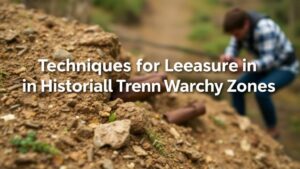The Search for the Lost Tomb of Alexander the Great: Modern Archaeological Efforts Based on Ancient Writings
The Search for the Lost Tomb of Alexander the Great: Modern Archaeological Efforts Based on Ancient Writings
The quest to locate the final resting place of Alexander the Great, one of historys most illustrious figures, has captivated historians, archaeologists, and enthusiasts alike for centuries. Ancient writings provide clues that have spurred modern archaeological efforts, leading to extensive research and exploration in diverse locations. This article examines these modern endeavors, framed around historical texts and emerging technological methods.
Historical Context
Alexander the Great, who reigned from 336 to 323 BCE, was known for his remarkable conquests, which spread Hellenism across a vast territory. After his untimely death in Babylon, disputes over his burial led to the initial loss of his tombs exact location. Ancient sources, including the works of historians like Arrian and Plutarch, indicate that his body was transported to Alexandria, Egypt, but accounts diverge regarding the eventual resting place.
- Arrian stated that Ptolemy, one of Alexanders generals, secured the body and transported it to Egypt.
- Plutarch suggested that Alexander was initially laid to rest in a simple grave until a grand tomb was constructed.
These narratives lay the foundation for modern archaeological pursuits, shaping hypotheses about where to search for his tomb.
Modern Archaeological Techniques
Recent efforts to locate Alexanders tomb incorporate advanced technologies and methodologies. Key techniques include geophysical surveys, ground-penetrating radar (GPR), and satellite imagery, enabling archaeologists to explore without intrusive diggings. e technologies provide an excellent opportunity to analyze sites that align with the descriptions from ancient texts.
- Geophysical Surveys: These non-invasive assessments allow archaeologists to identify subsurface anomalies, suggesting the existence of structures below ground.
- Ground-Penetrating Radar (GPR): GPR uses radar pulses to image the subsurface, giving insight into potential burial sites and artifacts.
For example, in 2015, archaeologist Dr. Niko Kourouklas utilized GPR at the ancient site of Alexandria, revealing promising anomalies consistent with burial structures by applying the descriptions found in ancient writings.
Notable Excavation Sites
Several key sites have emerged as focal points in the search for Alexanders tomb, particularly in Alexandria. These include the Temple of the Sun, the Serapeum, and the area surrounding the Alexandria Eastern Harbor.
- The Serapeum: Originally built as a temple to the Hellenistic god Serapis, this location has historical ties to Alexander’s legend, being suggested as a burial site in various accounts.
- Eastern Harbor: The ancient port area has yielded significant finds that align with historical records regarding monumental constructions.
Recent exploratory digs at the Serapeum have uncovered artifacts indicative of high-status burials, such as lavish pottery and inscriptions referencing Ptolemaic kings, hinting at a link to Alexander’s lineage. e finds present compelling evidence that this area might hold the key to locating Alexander’s tomb.
Challenges in the Search
Despite the advancements in archaeological techniques and historic references, the search for Alexanders tomb remains fraught with challenges. The tumultuous history of Alexandria, including the effects of earthquakes, ancient wars, and urban development, complicates excavations.
- Urban Development: Modern construction in Alexandria has obscured or destroyed potential archaeological sites.
- Misleading Accounts: Divergent ancient texts can lead to conflicting interpretations, necessitating careful analysis and cross-referencing.
Also, the cultural significance of the sites has raised ethical considerations concerning preservation and excavation practices. This concern necessitates collaboration between archaeologists, local authorities, and heritage organizations to ensure responsible research and site management.
Future Prospects
The search for Alexanders tomb remains ongoing, and new technologies and interdisciplinary approaches continue to play a central role. Future endeavors may employ more sophisticated tools like drone imagery and improved remote sensing technologies that can penetrate complex strata with minimal disturbance.
Also, approaches that bridge the gap between archaeology and cultural history may yield more holistic insights into the significance of Alexander as a historical figure, building a renewed interest in the context surrounding his burial.
Actionable Takeaways
For those intrigued by the search for Alexander the Greats tomb, here are a few key takeaways:
- Stay informed about ongoing archaeological projects and findings in Alexandria; attending local lectures and participating in virtual discussions can enrich understanding.
- Explore the ancient texts that provide context–works by historians such as Arrian and Plutarch are essential for grasping the historical narrative.
- Consider the impact of modern technology on archaeology; advancements in non-invasive methods are revolutionizing how archaeologists approach historical mysteries.
As the search for Alexander’s tomb continues, it embodies the intrigue of archaeology and illustrates humanitys enduring fascination with its past.


